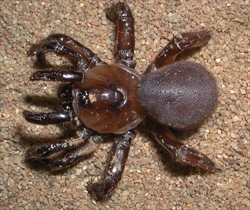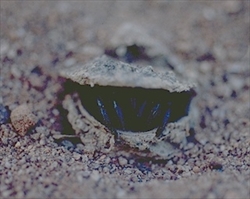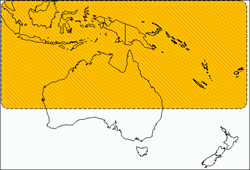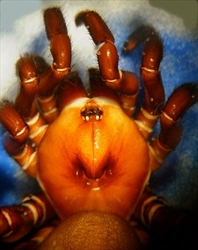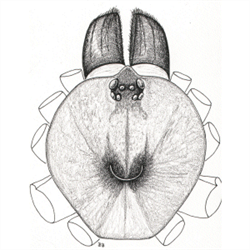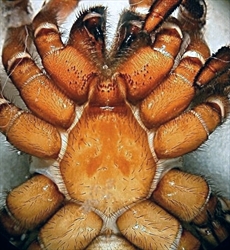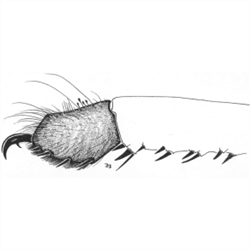Large to extremely large (8–30mm or more) (Fig. 1).
Fact Sheet
Halonoproctidae: Ummidinae: Conothele
Northern Territory, Western Australia, Queensland, New South Wales, South Australia, New Guinea (Fig. 5).
Tropical rainforest, swamp, temperate rainforest, open eucalyptus forest, semi-arid areas, intertidal or littoral.
(Figs 7-8) Caput of females gently raised, higher than thoracic portion; fovea of females deeply procurved or U-shaped.
Eyes (Figs 7-8) eight; group tiny, about 0.3 of headwidth; two rows; front row wider; on tubercle.
Chelicerae (Fig. 9) fangs longitudinal; retromargin with three or more teeth; middle row of teeth absent; intercheliceral tumescence in male absent; rastellum with several short blunt spines on distinct mound.
Maxillae longer than wide; anterior lobe absent; serrula absent; cuspules in female few, for entire length.
Labium wider than long; cuspules in female few, 10 or less; in broad group.
Sternum (Fig. 9) with one pair of sigilla posteriorly, or with extensive brown shallow; depressions medially.
Tarsus I of males disto-ventrally swollen (Fig. 10); tibiae and metatarsi I of females tapered, cylindical, normal, or dorso-ventrally flattened (Fig. 4); tibia III with long dorsal saddle (Fig. 3); preening combs on metatarsi absent; tarsi with filiform trichobothria.
Claws three claws; paired claws with one row of teeth centrally; third claw bare; tufts absent.
Scopula In females, only on entire tarsi I, II.
Cymbium aspinose and ascopulate.
Trapdoor spider waiting in entrane to burrow.
Conothele.

